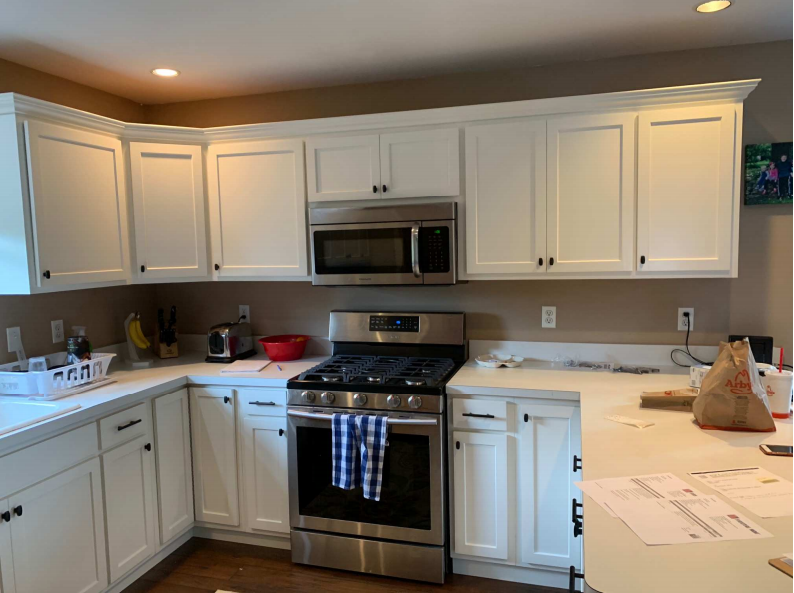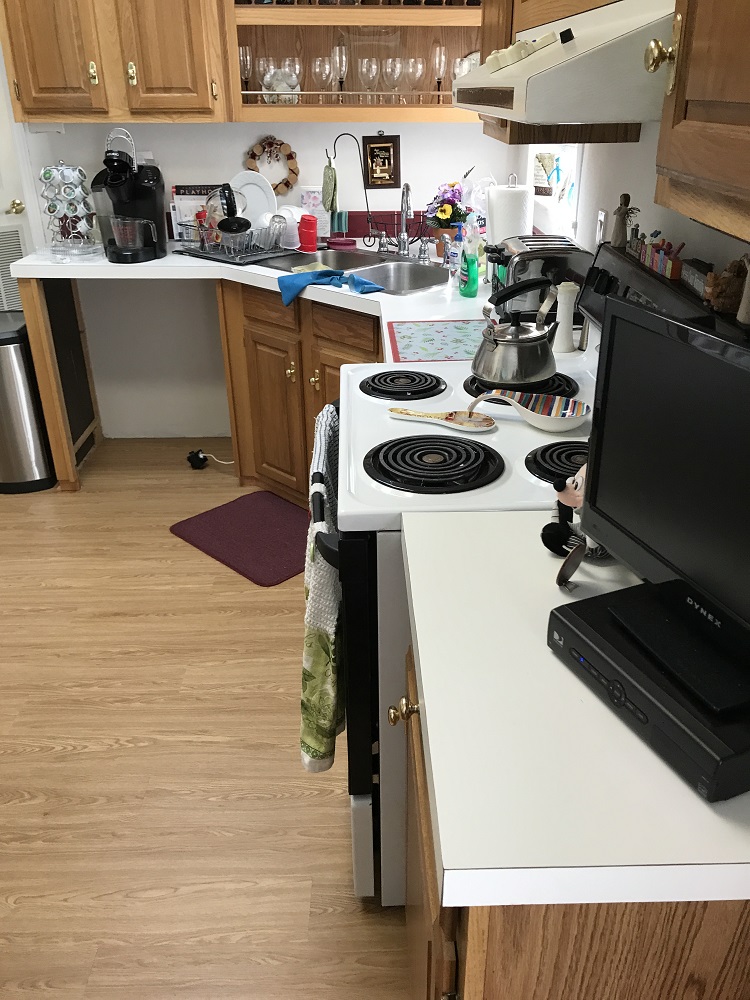Stopping Water Damage in the Kitchen
Stopping Water Damage in the Kitchen
Blog Article
How do you actually feel in relation to Most Common Causes of Residential Water Damage ?

The cooking area is the room where a lot of water activity takes place. You can rarely do anything without using water in the kitchen, from cooking, cleansing, and also doing the recipes.
Thus, checking your kitchen area once in a while is a need. Because it has a higher chance of getting water damage due to the appliances you use there, this is.
When faulty, these devices that regulate water can make your cooking area unpleasant as well as impact the framework of your structure in the future.
Let's examine out some reasons of the water damage in the kitchen area and also what you need to look out for.
Some Root Causes Of Water Problems in the Kitchen area
These are a few reasons for water damage in the kitchen area.
Faulty Drain Piping
Drain pipes Pipelines are required parts of our houses, specifically in our restrooms and cooking areas. Nonetheless, they get faulty by obtaining blocked, cracked, as well as burst. Or even worse, they can be wrongly or freely linked; whichever the case might be, it can be a serious problem.
Damaged drain pipes can create water damage and, as a result, trigger mold development as well as injure the appearance of your wall. It can likewise make the affected location look untidy.
Therefore, it is a good idea always to examine to guarantee that all the pipelines are in good condition and also get an audio plumbing system to keep as well as deal with any type of concerns.
Faulty Cooking Area Sink
The kitchen area sink is an essential as well as the majority of used part of the kitchen area. Hence it is prone to water damage; damages such as obstructed pipes, leaking pipelines, and malfunctioning taps.
These damages can be frustrating, specifically when one is busy in the kitchen area. Nonetheless, it doesn't just occur without offering a hint or an indication. So below are some indicators to recognize when your sink is not okay
These are the major problems that can happen to your cooking area sink. Nevertheless, one way to quit this damage is by making certain that food particles do not get involved in the pipes. You are additionally inspecting the pipes and taps and making sure that it is properly taken care of and also in good condition.
Leaking Dishwashing machine
Dishwashers make life in the kitchen much easier. Nonetheless, it is an optional kitchen home appliance and also, when available, can be a source of water damage. On top of that, like various other machines, it will establish mistakes gradually, despite having upkeep.
One of the faults is leaking with the door or underneath the dish washer. These mistakes create because of age, splits, incorrect use, loosened web links to pipelines, and so on.
Mistakes because of age originated from constant use. Because of this, the door leakages because of closing and opening.
Faults from the wrong usage may cause water damage by introducing cracks to it. Hence, it is advisable to follow the manual guide of the dishwasher to stop this certain damages.
The leaks under the dishwasher can come from splits in the gasket, tube, and also loosened or wrong connection to pipes or drains pipes.
This sort of leakage frequently goes undetected and also can be there for a very long time. Due to the time framework, it could cause and also harm the floor mold development.
A lot more so, the longer the water stays, you will certainly observe the warping of the floor where the dish washer is. This is a great sign to keep an eye out for when inspecting if your dishwasher leakages. Detecting and repairing this in a timely manner prevents significant water damage to your flooring.
Profits
Watching out for damages in your cooking area can be charging yet needed. It makes your work there easier and also much safer.
The reasons noted above are just a few elements to consider, specifically if your kitchen has a great deal of devices.
Obtain a professional plumbing solution to come about and inspect for any kind of damages and get them taken care of.
It makes your kitchen location wet and messy, particularly when trickling from the pipes. As well as if it is trickling from the faucet, it leads to water waste.
It is an optional kitchen area device and, when offered, can be a resource of water damage. More so, the longer the water stays, you will certainly see the warping of the floor where the dishwashing machine is. Detecting and fixing this on time stops significant water damage to your flooring.
Water Damage In Your Kitchen
Your kitchen is the heart of your home: so much time is spent there cooking, eating and enjoying the company of family and friends -- or maybe just some quiet time alone late at night or early in the morning! The fact that our kitchens are so essential to our homes is balanced by an ugly truth: because they hold a variety of pipes, water lines and appliances that use water, they’re also the places where so many leaks and spills can happen, sometimes causing unsightly and even unhealthy water damage. Do you have water damage in your kitchen? Let us show you how to do a thorough inspection and the signs to look for, as well as some proactive steps you can take to minimize the risk of water damage happening in your kitchen in the future.
The Sink.
Obviously this is the place where the most water is probably used in your kitchen, so it can create the biggest risk for water damage. Having a properly installed backsplash is one of the easiest ways to minimize water damage issues, and when you do your daily and weekly wipe-downs, you can do a quick visual inspection of any areas where water collects when you run the faucet to do the dishes and prepare food. This routine, basic maintenance to dry your sink, counter and backsplash will go a long way to keeping water damage away from your kitchen. The more difficult area to monitor is the cabinet space below your sink: how often do you really look under there behind all those cleaning supplies, towels and other random items? It’s so easy to overlook this area, but if you miss a leak under the sink, serious water damage can result. Your garbage disposal can cause issues if the drain seal between the sink and the disposal itself deteriorates, or if the disposal’s drain hose comes loose. Your water supply lines to the faucet, and possibly your dishwasher, are also located under the sink -- so a weekly check with your eyes and your hands to look and feel for any dampness or leaks can be a real lifesaver for your kitchen, and your bank account! If you find any wet spots, take the time to clean them up and locate the source of the leak. Fixing the issue might be as simple as tightening a loose connection on a fitting. But if you’re not sure where the leak is coming from, it might be from behind or below the cabinet, and that’s when it’s time to call a professional service provider like AdvantaClean to help you assess the damage.
The Fridge.
Your refrigerator and freezer also have a potential for moisture damage issues due to the water lines that provide the ice maker and any dispensers with the water they need. A periodic inspection behind your fridge while you’re cleaning can be a great way to verify that the water lines aren’t leaking. A more easily identifiable issue on an everyday basis will be the area below your water and ice dispensers -- placing a mat there to catch any stray drops or ice cubes is a great way to keep water damage from developing. But be careful here too! If you let a wet mat stay on the floor for too long, water can still seep into your floors and cause damage anyway. So every so often, such as when you’re cleaning your kitchen, make sure you’re picking up the mat to let the area dry out. This will save you the long-term hassle of fixing preventable water damage.
The Dishwasher.
This wonderful piece of modern technology can be your best friend -- right up until it leaks and becomes your worst enemy. The problem with the dishwasher is that a leak can be hidden from view because of how it’s installed under your counter. So the best way to prevent a leak is to have your dishwasher professionally installed by an insured service provider from the get-go so that any problems that arise later will be covered under warranty. But after installation, keep an eye on the floors and toe-kicks around the unit. If you notice any warping of the floor, wet spots, or even an unusual softness to the step when you walk around it, that might be an indication of a leak. Be careful if you decide to pull the dishwasher out to do a deeper inspection, because you don’t want to cause a bigger issue. If you’re positive there’s a leak and you aren’t able to locate or reach an intermediate shutoff valve, you can always turn off the main water supply valve to your home to give you time to figure out how to handle the situation.
https://www.advantaclean.com/blog/2019/february/water-damage-in-your-kitchen/

I hope you liked our article on How To Prevent Water Damage To Your Kitchen. Thanks a lot for taking the time to read through our piece. Do you know about somebody else who is fascinated about the topic? Do not hesitate to share it. Thanks a lot for taking the time to read it.
Booking Report this page